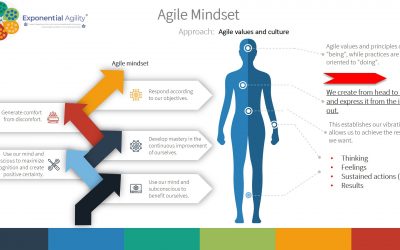There is a close relationship between innovation and the risk predisposition threshold.
The higher your range of risk predisposition, the greater your capacity for innovation, the higher risks we have, the more possibility we have of building new things; instead, if we always do the same, we have a low risk level and the most that we are in our comfort zone, it’s also related to the responsible management of risks and the level of personal resilience, in the event that our mitigation strategy fails when the risk materializes, it resides in how we prepare ourselves to turn a loss into profit, to how fast we do it, as we are aware of our limiting beliefs and our new effective approaches.

Learning presents a challenge, it is no one else’s challenge and personal commitment. These active and dynamic relationships are what make us grow and get out of our comfort area, going through fear, learning itself and growth.
The success of many research laboratories, which have a close and effective relationship with industries, resides here, in this existing relationship between innovation, resilience, risk and psychological security, it is something that they have always known and masterfully handle, they scale it at the organizational level vertically and horizontally, start-ups feed on it, it is an internal fire, a fuel, but it is not an ether, but something concrete that is measured with results and growth every day.
In many large companies and underdeveloped cultures, it does not mean the same, but quite the opposite. Of course, there are exceptions, remember that human beings are not brought from Mars, it applies to both perspectives.
Although it is true that many companies do not need it, it is part of a culture of development, of a team of people, where experimentation is a valid way to learn, a culture where the language of innovation is based on levels of achievement, the learning cycles, there is psychological security and physical security, there are learning simulators, all embedded in everyday life, the advantage gained by learning fast is latent and well known, learning frequently with doing, starting small, building iteratively and incrementally, defining our purpose of massive transformation, which not only includes our company, but our community, where we all collaborate to build value, the exchange of value is the greatest asset, is directly proportional to the prosperity, the experience and the positive impact that is generated in the community and in the environment.
It is very important that, as catalysts for innovation, we know all these concepts, in a practical and theoretical way, since the main innovation laboratory is ourselves, it is our responsibility, as we want to be, of no one else.
Miguel Martínez.
May 2020.
Bibliography:
- Piscione, D. P. (2014). The risk factor: Why every organization needs big bets, bold characters and the occasional spectacular failure. New York: Palgrave Macmillan.
- Ferriss, T., & Piñeiro, D. O. (2017). Titanes: Tácticas, rutinas y hábitos de multimillonarios, estrells y artistas famosos. Ciudad de México: Paidós Empresa.
- Josephs, A., & Rubenstein, B. (2018). Risk up front: Managing projects in a complex world. Austin, TX: Lioncrest Publishing.
- Bodell, L. (2017). Why simple wins: Escape the complexity trap and get to work that matters. New York, NY: Bibliomotion.
- Your Company Is Too Risk-Averse. (2020, March/April). Hardvard Business Review, (March & April)

